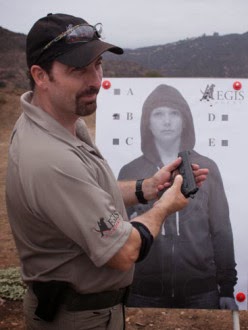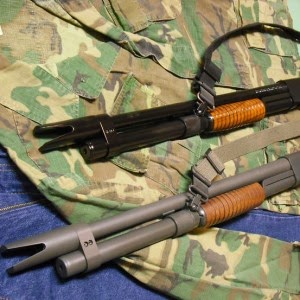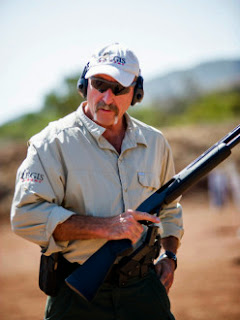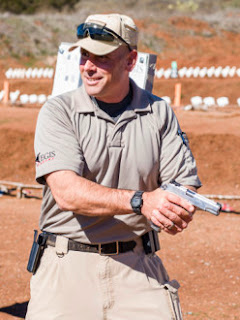
There are number of projects under development to achieve the goal or making a reliable owner authorized gun. This is not the first time we have pursued this. The simplest design was a key lock, which was developed for some rifles in the 1950’s that made them inoperable without the key inserted into the stock. Since the 50’s, we have come a long way, and what is generally envisioned by current advocates of smart gun technology is a finger or palm print identification panel on the grips of firearms that would recognize the owner.
Smart gun technologies potential impact on crime and violence
Proponents of smart gun technology claim it will massively reduce crime and accidents. Opponents claim that it is unreliable, will not stop crime and consider it the anti-gun advocates marketing panacea for eliminating law-abiding citizens right to defend themselves. As usual, both sides of the argument have developed a set of statics and arguments to support their claims – and neither one is really falsifying numbers and yet they manage to come to completely opposite conclusions. Lets start with a quick review of the realistic numbers that smart gun technology may influence.
According to the Center for Disease Control, approximately 500 youths commit suicide with a firearm each year. Roughly another 275 are killed in accidents involving firearms. These are the poster children for the anti-gun lobby and are used to promulgate the emotion-based argument that “guns are killing our kids.” Smart gun technology could prevent a number of these deaths from occurring (or would remove the firearm from the suicide equation) if the technology was adopted in large scale. Were this to occur it would remove a key rallying point from the anti gun lobby’s argument and is worth exploration of the possibility from that standpoint alone. The unfortunate reality is that these few occurrences do not make a remotely significant impact on the total problem.
There are about 105,000 firearms related injuries and deaths each year in the United States. The ATF estimates about 85% of the guns used in crimes are stolen or illegally transferred. The population of injuries and deaths we are attempting to prevent by stopping criminals from being able to use guns through smart gun technology is about 90,000.
The number of guns that are “stolen” in the traditional sense make up approximately 12.5% of the guns used in crime according to the ATF. Typically it is illegal transfers that make up the rest. The guns are legally purchased, and then illegally transferred or simply sold by Federal Firearms Dealers to criminals the dealers know to be ineligible. According to the ATF, 85% of “illegal” guns on the street can be sourced to 8% of the firearms dealers in the country. Smart gun technology will do nothing to stop the 8%, and unless we are to create a centralized registry and firearms authorized user control center – they will have the ability to “authorize” guns. That leaves us with about 11,000 injuries and homicides that may be prevented if we could develop the technology to a functional level or about 10% of the problem.
From a morbidity perspective, another argument is that many gun owners are likely to have their firearms used against them in a crime. The developers of smart gun technology claim it could eliminate this risk as well. The reality of that portion of the statistics is that most (more than 90%) of the guns used on their owners are cases of domestic violence. In many cases, family members would choose to authorize both adult inhabitants of the house to use the firearm, negating any real reduction. Regardless, it could eliminate the very a small percentage of cases in which a criminal takes a gun from a law-abiding citizen and uses it against them.
Based on the above cocktail napkin calculations, smart gun technology will at best impact less than 10% of the total problem, and only if we could somehow remove all the “dumb” guns from the equation. That seems a highly unlikely scenario.
Smart Gun Technology and Reliability
If you are a responsible gun owner, you lock your guns up when they are not under your physical control. Regardless of how you secure your firearms, there is an impact on accessibility that smart gun technology could provide. It would eliminate the need for safes. If smart gun technology becomes as reliable as the manufactures want to claim that it will be, you’ll be able to safely lend your loaded firearm to your 5 year old to play Cowboys and Indians in the backyard. Leave it laying anywhere you want around the house, and most importantly it will eliminate the trade off between accessibility security.
California Senate Bill 293, scheduled for committee later this year, would require all firearms in the state to have an “Owner Authorized” technology within two years after the 2nd firearm that met the criteria was added to the “not unsafe” firearms list. The Armatix iP1 supposedly meets the standard, has been added to the list and is for sale in California at only $1,399. In order to activate it, you will need the $399 accompanying wrist watch with the RFID code to activate the gun.
The wrist-watch RFID link concept has been around since the 90’s. This particular model was developed in Germany. There are number of options on similar concepts from rings to necklaces. There are a number of problems with the concept. First, I am now relying on two electronic devices to work perfectly when I need them to, in addition to the firearm itself. There is not way these additional links will enhance reliability. Second, if I’m in a violent encounter and my watch is broken, my gun is useless when I need it most. Of course, loss or theft of the RFID device is another potential problem that makes the firearm useless. Lastly, if the are stolen together, we have negated any potential impact on crime that the technology is supposed to stop. I would put the concept of watch activated, or any other external RFID device, squarely in the bad idea category.
The future….
The finger/palm print recognition smart gun technology is what really shows promise – at least in concept. We have yet to see one that is reliable enough in a grip-mounted form, and light enough to be functional. There are some prototypes being developed that may soon function. We would eliminate the trade off between security of our firearms and accessibility. Unfortunately, smart gun technology has not produced that firearm – yet. Until they do, I have to keep my guns in my safe or on my person – like every other responsible gun owner out there.
When Smart Gun Technology has reached an acceptable level of reliability and functionality, you will know. Gun owners will not have to be mandated to purchase them, they will line up in droves to purchase them. The concept is great and if we can get it to work, I sincerely doubt that existing “dumb” guns will retain any real market value beyond historical pieces. We are nowhere near that point yet and the anti-gun lobby is attempting to legislate new restrictions under the guise of a positive impact on public safety. Unfortunately, that positive impact simply does not exist.
Have fun & Stay Safe this week!
First Published at Aegis Academy
About Author
- Patrick Henry
President










